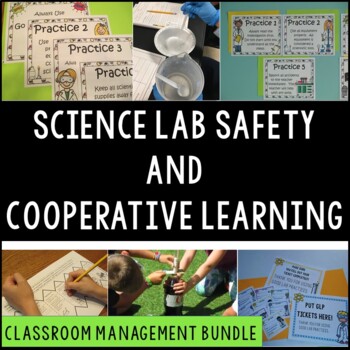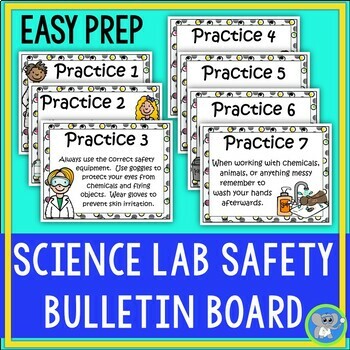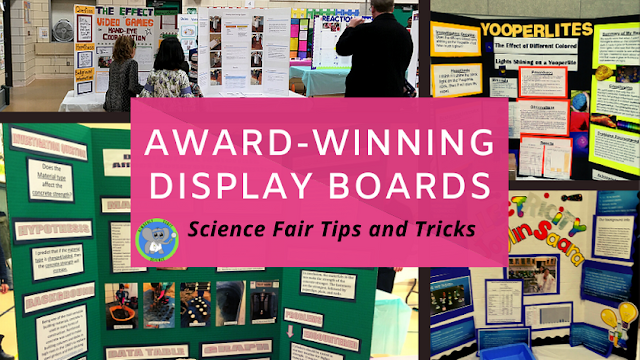Effective classroom management is crucial yet often overlooked in college courses. While there may be extensive lessons on crafting the ideal lesson plans, there seems to be little emphasis on maintaining student engagement and handling disruptive behavior. Fortunately, a positive student-teaching experience started me on the right track. The challenges change from year to year, but having lots of different strategies can help you modify for students' needs.
What makes classroom management unique in STEM and Science Labs?
If you are a regular elementary classroom teacher, you are with your class all day. This allows you to create a classroom management system that integrates multiple situations and be more tailored to meet those classes' needs.
For a special teacher, it can be more challenging.
- You are typically with your classes for only 30-60 minutes. The time goes by quickly.
- Many special teachers have over 200 students. Some can have 700!
- Science labs and STEM classrooms are exciting places. Don’t expect a quiet classroom because students are actively engaged.
- There is always lots of cleanup and setup with very little time between classes.
What can we do to make the classroom experience safe and fun in such a short period of time? Over the years, I have tried different things, and here are some of my favorites. I also continue to add new things and modifications.
1. Set Clear Expectations at the Beginning of the Year.
It is essential to begin the year on a positive note. Students should practice moving around the room, cleaning up, and in group role-playing conversations. Additionally, they should practice being attentive and quiet when necessary. It is crucial to demonstrate the expected behavior and allocate time for practice during the initial month of class.
LEARN MORE
2. Learn the Student’s Names.
Remembering the names of all students can be challenging, but it helps build a sense of community in the classroom. Creating a seating chart and asking students to say their names can make it easier. Acknowledge that it's difficult, but strive to do your best.
LEARN MORE
3. Use Simple Positive Reinforcement Strategies
Positive reinforcement is important in our brief time with students. We acknowledge and appreciate good behavior while also disciplining negative behavior. Safety in our science/STEM lab depends on students understanding appropriate behavior. You can do this in many ways that will not be time-consuming or interfere with class time.
LEARN MORE
4. Have a Quiet Down Method
During a science class, there may be times when it's necessary to interrupt a lab in progress to convey important information. A well-equipped STEM/Science Lab is typically a bustling and noisy environment. If a student makes a discovery that you want to share with the whole class or if you have forgotten to mention an important tip, you need a quick and effective method to quiet them down and get them back on task.
Check Out These Great Ideas!
5. Start the Class with a Prompt, Science Demo, or Bell Work.
The Science/STEM Class is an exciting place where students come in with enthusiasm, ready to explore all the exciting tools you have prepared for the day's lesson. A prompt at the front of the room is a great way to get them to sit down instead of touching the lab setup. It will also get them focused for the day. Have a slip of paper when they first walk into the room or a page in their science notebook. The first thing they do is sit down and complete today's prompt.
Do you really want to engage them? Consider starting out with a science demo. More in-depth bellringers are a great way to provide spiral review.
LEARN MORE
6. Organize Your Classroom in Groups or Teams.
To keep things organized and efficient, it's helpful to divide students into groups and assign each group a name. This way, you can easily identify them by calling out their name. We like to use science-themed group names. It helps expand their vocabulary and aligns with the subject area. Assign tables and bins to help keep things organized.
7. Use Realistic Group Roles to Foster Cooperation.
In a group, it's important for each member to have a specific role or job to maintain organization and achieve better results during tasks. Having everyone in the group go to get supplies is unnecessary, so assigning specific roles can help with efficiency. Additionally, having someone responsible for lab safety is crucial to maintaining a safe environment. We also find it produces better data and improves class discussions.
LEARN MORE
8. Focus on Practice Makes Progress!
Understanding that thinking like a scientist or engineer takes time and practice is crucial. Not getting everything right on the first try is normal, as experiments often yield unexpected results. The objective is not to prove a hypothesis but to learn about scientific phenomena. It's common for students to come up with new ideas for improvement during a STEM challenge, and it's okay if they do not complete it. By encouraging my students to focus on the progress they have made and self-assessing their science journal using a rubric, they are able to identify their strengths and areas for improvement. This approach helps students become less frustrated and more excited about future challenges.
We hope you found some new ideas. Students can even give their input on classroom management. A good classroom management plan should foster creating a positive relationship with students.
SHOP THIS POST







.png)





